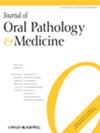Intraoral Basal Cell Carcinoma: Controversies and Insights From a Systematic Review
Abstract
Background
The existence of intraoral basal cell carcinoma (IOBCC) remains controversial, despite reported cases in the literature.
Materials and Methods
A systematic search of four electronic databases and grey literature was conducted. Strict inclusion criteria were established to define a true case of IOBCC, including Ber-EP4 positivity to distinguish it from peripheral ameloblastoma and the absence of a history of skin lesions—either nearby, which could indicate direct infiltration, or at distant sites, which could suggest metastasis rather than a true primary IOBCC.
Results
A total of 9 cases met the inclusion criteria. IOBCC lesions were located on the palate, buccal mucosa and gingiva, with no cases involving the tongue or floor of the mouth—common sites for squamous cell carcinoma. Histologically, islands of basaloid cells with peripheral palisading and stromal retraction were the predominant findings. All cases were Ber-EP4 positive. Six patients remained disease-free during follow-up, one experienced multiple recurrences, and two had no follow-up data.
Conclusion
IOBCC is extremely rare, with few documented cases. While previous studies suggested the gingiva as a common site, this review found no clear predilection, and some previously reported cases may have been misdiagnosed as peripheral ameloblastoma. Ber-EP4 positivity in IHC is valuable for distinguishing between these entities. Additionally, by excluding cases with potential infiltration from skin lesions, this review underscores the importance of a thorough dermatological evaluation to rule out cutaneous extension or metastasis.

 求助内容:
求助内容: 应助结果提醒方式:
应助结果提醒方式:


